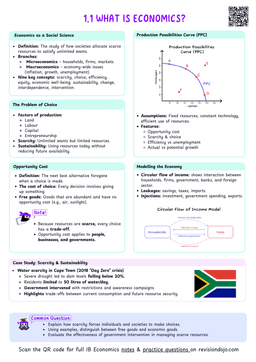- Large firms with substantial market power play a crucial role in shaping market dynamics and economic development.
- The advantages large firms access stem from their ability to leverage size and resources effectively.
- The two primary benefits large firms gain are:
- Economies of scale.
- The use of abnormal profits for innovation and development.
Economies of scale
Economies of scale
Reductions in average production costs that arise when a firm increases its output by scaling up all its inputs in the long run.
- Economies of scale can be understood as cost advantages that arise when a firm increases its scale of production, leading to a decrease in average costs per unit.
- Economies of scale explains the downward-sloping section of the long-run average total cost curve, as larger firm sizes lead to lower costs per unit of output.

Economies of scale can include:
- Purchasing economies: bulk buying of inputs like raw materials reduces costs per unit.
- Technical economies: large firms can afford advanced machinery or technology that smaller firms cannot, increasing efficiency.
- Managerial economies: specialized managers can oversee various departments, improving productivity and reducing inefficiencies.
- Marketing economies: large firms can spread advertising and branding costs over a larger output base.
Economies of scale can be beneficial for society since:
- They allow firms to reduce costs and increase efficiency as they grow.
- This expands the production possibilities of the economy.
Natural monopolies
Natural monopoly
A monopoly that can serve the entire market at a lower average cost than if the market were divided among smaller firms. This occurs when the total market demand is small enough for the monopoly to benefit from economies of scale, keeping its long-run average costs falling.


